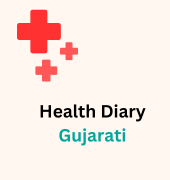What is COPD?
COPD, or Chronic Obstructive Pulmonary Disease, is a prevalent condition characterized by difficulty breathing. It typically develops after prolonged exposure to irritants like cigarette smoke, industrial fumes, or pollutants. In India alone, an estimated 3 crore individuals, both male and female, grapple with COPD.
What Happens to Your Lungs in COPD?
COPD is often a combination of two primary conditions: chronic bronchitis and emphysema.
1. Chronic Bronchitis: This condition involves inflammation and swelling of the airways, leading to excessive mucus production. As a result, the air passages narrow, making breathing more challenging.
2. Emphysema: In emphysema, the tiny air sacs in the lungs, responsible for exchanging oxygen and carbon dioxide, become damaged and lose their elasticity. This damage traps air in the lungs, impairing airflow and causing shortness of breath.
Symptoms and Risk Factors
Recognizing the symptoms of COPD is crucial for early diagnosis and management. Common symptoms include persistent cough, wheezing, shortness of breath (especially during physical activity), and frequent respiratory infections.
Several factors increase the risk of developing COPD, including smoking, exposure to environmental pollutants, genetic predisposition, and occupational hazards.
Managing COPD
Effectively managing COPD involves a multifaceted approach aimed at alleviating symptoms and improving quality of life.
-Recommended Treatments: Inhaled medications are the cornerstone of COPD management. These medications, administered through inhalers, help open up airways and reduce inflammation, making breathing easier. It's essential to use prescribed inhalers regularly and as directed by your healthcare provider.
-Lifestyle Modifications: Quitting smoking is paramount for COPD patients, as continued smoking worsens symptoms and accelerates lung damage. Engaging in regular exercise, under the guidance of a healthcare professional, can strengthen respiratory muscles and improve lung function. Additionally, adopting a healthy diet, rich in fruits, vegetables, and lean proteins, supports overall well-being.
-Breathing Techniques: Simple breathing exercises like purse-lip breathing can help COPD patients manage shortness of breath. This technique involves inhaling slowly through the nose for two seconds, then exhaling slowly through pursed lips for four seconds.
Conclusion
Living with COPD requires proactive management and lifestyle adjustments. At Amba Health Center and Hospital, we're committed to supporting individuals with COPD through personalized care plans, education, and resources. By understanding the nature of COPD and implementing effective strategies, individuals can lead fulfilling lives despite their diagnosis.
If you or a loved one are living with COPD, we encourage you to reach out to our dedicated team for compassionate care and support.
Remember, with the right support and management strategies, individuals with COPD can continue to thrive and enjoy life to the fullest.
This blog post aims to provide informative content about COPD while maintaining a compassionate and supportive tone, reflecting Amba Health Center and Hospital's commitment to patient care.




